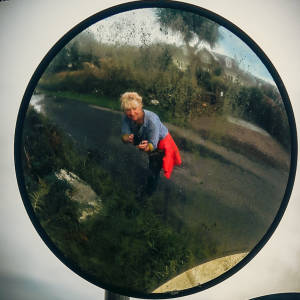Schull workhouse
No blip yesterday, life just caught up with me. I had a very interesting morning though, my last interview for the history book - a former principal and someone I'd been trying to pin down for months. I spent two hours with her and the craic was mighty - she remembered every single one of her former pupils and knew exactly what had become of them - who had married who, who had had affairs, who'd done well, who hadn't done so well, how many children they had - I think I could write an alternative history now! I was full of admiration for her, for she was the only teacher and taught everything and everyone from 4-13 year olds; and she had loved it. At the end of the interview she gave me a big hug.
Today has been very low key and I went to Schull to have my hair sorted. On the way back I did a small trespass and stopped off to look at the remains of schull workhouse. This is a large 10 acre site, still walled and these are all that remains of the once rather magnificent entrance gates. The magnificence masks a bleak history though. It was opened in January 1850 and included a governor's house, dormitories, a chapel, school, refectory, laundry and graveyard. There were two wards each for men and for women, a maternity ward and a separate section for children. Women worked in the laundry, men drew water from the wells and worked a small area of land. Six weaving looms were also operated. There was enough accomodation for 600 inmates and that description paints a rather rosy and inocuous picture of what was in reality a very bleak and harsh existence. The building was burned down in 1921 by the I.R.A.
The entrance gates, the main building and two smaller buildings remain, now ivy covered shells, as does the graveyard with almost two hundred unmarked gravestones. While I was investigating I disturbed a nest full of the most enormous and loud chicks - maybe jackdaws. The atmosphere was suitably sombre.

Comments
Sign in or get an account to comment.


